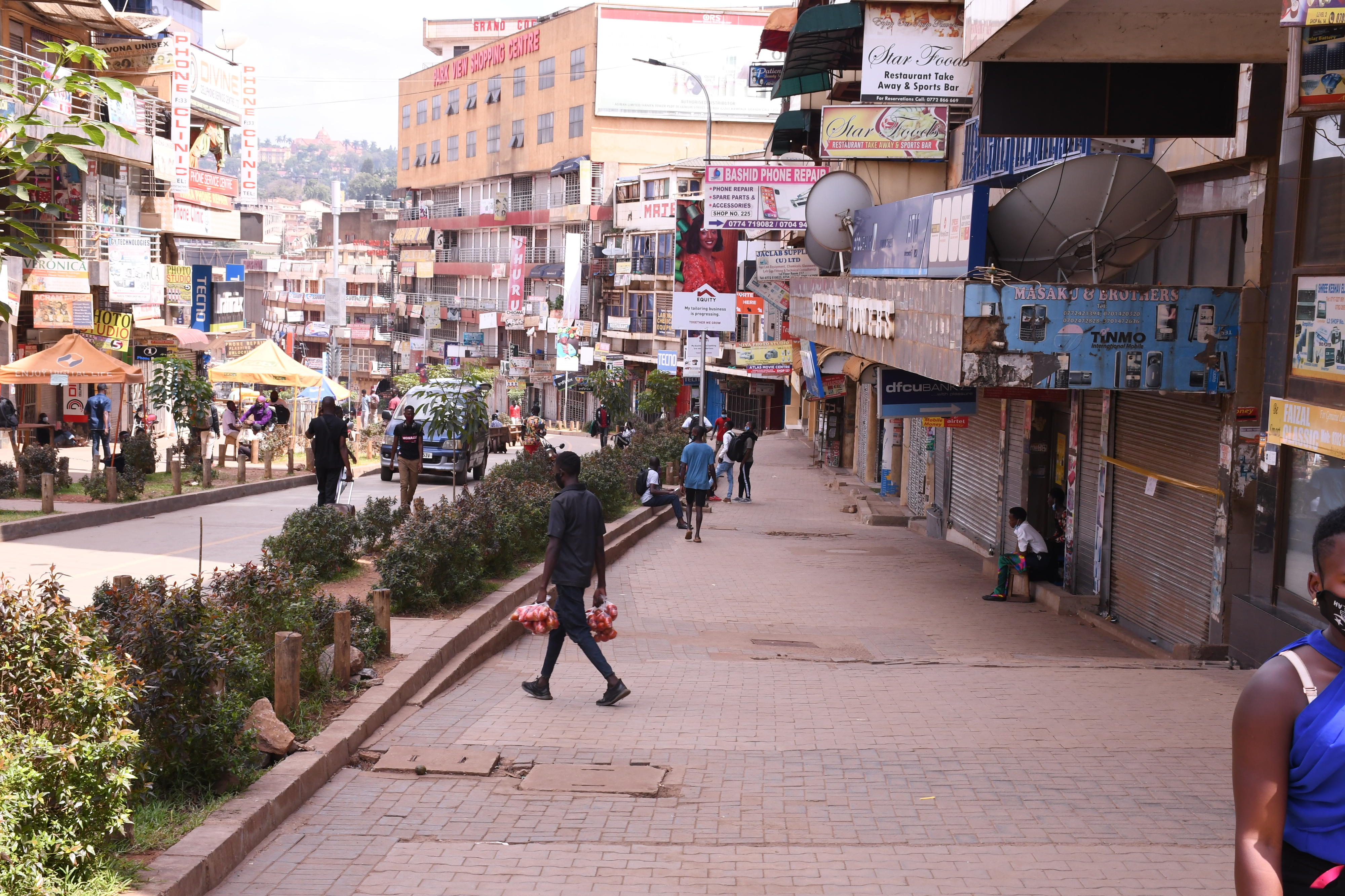Prime
2023: The challenge of getting supply to match current demand

Downtown Kampala during the Covid-19 lockdown. The pandemic affected how people do business. PHOTO/ FILE
What you need to know:
- Millions of businesses in 2023 were earning less cash flow than was sufficient to replace existing stock and pay wages and rent.
By 2023, it was clear that the national economy had run out of steam. Much of the concern about the economy was not just a case of the usual grumbling.
The full effect of the two-year Covid-19 global economic shutdown was now being felt in the Ugandan system.
The work-from-home regime imposed by the 2020-2022 lockdown had made many professionals realise that in this Internet era, not to mention Kampala’s traffic jams, it was not absolutely necessary to rent mid-town office space.
And so property developers suffered more vacant office premises.
South Sudan as an important new outlet for Uganda’s extra agricultural and light manufacturing surplus was no longer the buzzword it was a decade and a half ago.
Other entrepreneurs who had rushed to put up infrastructure after oil in the Lake Albert region was officially announced in 2006 realise that it is taking longer for production to start than had been anticipated.
Millions of businesses in 2023 were earning less cash flow than was sufficient to replace existing stock and pay wages and rent.
For the vast majority, business was more a way to keep busy and maintain a personal routine than actual profitable trading.
Domestic work in Middle Eastern countries is now the only option for the younger workforce. For some reason, we no longer hear much about employment prospects in Western Europe and North America as once was the case.
More than ever, State House in 2023 served as Uganda’s real central bank, bailing out entrepreneurs in distress who politically support the government.
The central challenge facing the economy was how to create consumer demand.
Why this is so requires that we go back in time by three decades.
What passed for GDP growth in the late 1980s to early 2000s, in reality, was recovery from the 20 years of disruption and scarcity from 1973 to 1993.
We all know the stories or have grown up or hearing them narrated – films taken to Nairobi or Kisumu for photos to be printed; Ugandans listening to KBC Nairobi as the only radio station in the region that played the latest American music, and we suffered a shortage of the most basic consumer commodities.
Uganda in the 1980s was much like South Sudan or eastern DR Congo today.
During the December 1987 Common Market for Eastern and Southern Africa (Comesa) summit in Kampala, such was the scarcity of hotel rooms in Kampala that Makerere University students were sent home early so that halls of residence could be used to accommodate the foreign delegates and their staff.
Under circumstances such as these, every sector was low-hanging fruit.
Demand far outstripped supply, houses were rented to foreign diplomats and expatriates in US dollars, the ultimate mark in profit and prestige in the late 1980s: To be paid in dollars.
There was no way the nominal GDP could not grow.
Any hotel, lodge, paint, beer, toilet paper, milk, sugar, or soap producer or importer had a ready, desperate market.
Around 2010, however, the long phase of recovery from the 20 years of scarcity from 1973 to 1993 had come to an end.
The lines of demand and supply crossed each other and from then on, supply began to exceed demand.
Since then, the economy has to actually grow and not simply make up for lost time. And this explains the structural pressure on businesses.
Rather than recognise this and start to address the demand side, the President and government officials continued to woo investors to set up base in Uganda.
GDP growth mainly by supply and more infrastructure built tends to disguise the other half of the story, which is the glut of basic commodities and the lack of matching demand and purchasing power.
The World Bank report on the status of Uganda’s economy published on October 5, 2022, remained relevant one year later: “The current account deficit widened to over 9 percent of GDP, primarily reflecting a deterioration in the terms of trade and wider trade deficit...growth in real consumption slowed, possibly because of reduced purchasing power, limited credit growth, and job losses. Employment fell after the second lockdown in June 2021 and remained at the same level in June/July 2022.”
Like many African countries, the Uganda government also felt, in good faith, that by upgrading the road network both between towns and within towns, somehow demand would naturally result.
Unfortunately, this has not happened.
Towns that were declared cities have seen a negligible uptick in business as a result of these new roads.
Most residents of the upcountry towns walk to work or commute by boda boda and smooth new tarmac roads are not a fundamental need.
The new international airport outside Hoima was a good idea on paper, but in reality flight traffic will most likely be at the level of the old airport in Entebbe.
It will not be a hub of cargo and passenger flights.
There is also a mismatch between the new tarmac roads and the pace and nature of the economy.
To take an example, these trunk roads have cut travel time to distant upcountry towns by half.
Beer, soda, newspapers, and merchandise can now be delivered and distributed in these towns before dawn.
However, it will still take long hours for 100 newspaper copies to be sold or crates of soda sold.
Many who rushed to buy smartphones thinking they would make business more efficient, have since discovered that this is not so.
More than a third of the country’s tax revenue now goes toward the servicing of debt for infrastructure investment that will never yield much result.
Even if one sends an instant WhatsApp message to a government official or business corporation, it will be weeks at the earliest before any action starts to be taken on the message.
More readily available electricity is better than shortages and loadshedding, but it does not address the structural challenge of low market demand.
And so, millions of dollars in foreign loans have been poured into upgrading the physical infrastructure without sufficient investment in or reforms of the business and public administration.
This, then, has been the economic picture of the outgoing year, one with a cloud hanging over it that many can’t put a finger on.
That cloud is the challenge of how to create demand in the consumer economy, or how to get supply to match current demand.





